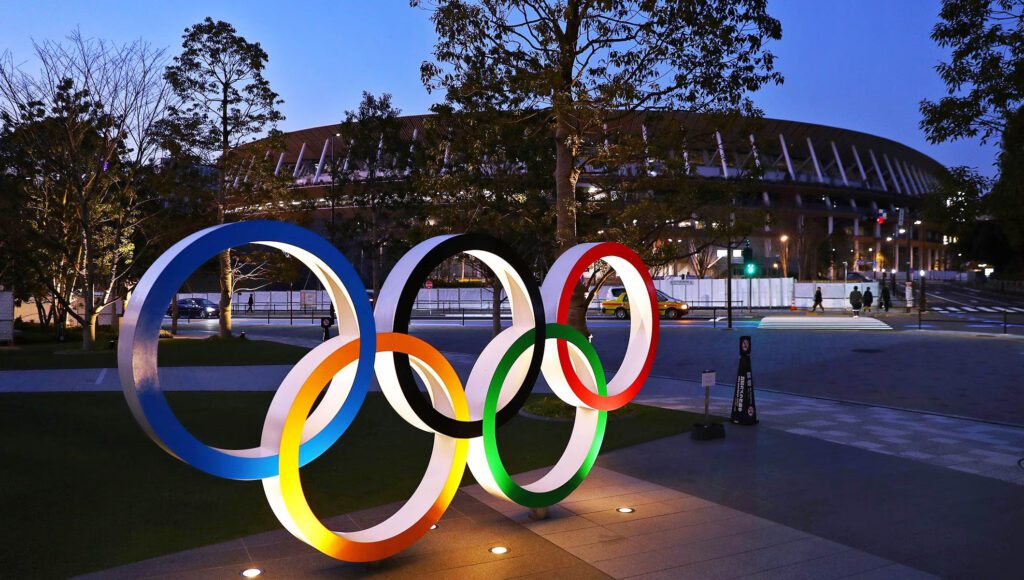As the world gears up for the Paris Olympics in 2024, a reflection on the groundbreaking viewership statistics of the Tokyo 2020 Olympics provides a promising outlook. The International Olympic Committee (IOC) reported that the Tokyo Olympics attracted over three billion viewers globally, marking it as the most-watched Games ever on digital platforms. This monumental achievement sets a high bar for Paris Olympics advertising 2024, which is anticipated to reach or even exceed these numbers.
Tokyo 2020’s Groundbreaking Historical Reach
The Tokyo 2020 Olympics marked a seminal moment in Olympic broadcasting history, characterized by its unprecedented global reach and significant strides in digital engagement. The Games attracted over 3 billion unique viewers, spanning traditional linear TV and modern digital platforms, setting a new benchmark for global sports viewership.
Tokyo 2020 distinguished itself as the first “streaming Olympics,” demonstrating the growing influence of digital platforms in the sports broadcasting realm. Official Olympic broadcast partners’ digital platforms alone amassed an astounding 28 billion video views, marking a 139% increase from the Rio 2016 Olympics.
This shift not only highlights the growing preference for digital media among viewers but also reflects the broader change in how global audiences prefer to consume sports content, favoring accessibility and on-demand viewing.
Furthermore, the expansion of available content was significant, with TV coverage increasing by 33% and digital output by 34% compared to the previous Olympics. This comprehensive approach ensured that more fans worldwide had access to the Games, enhancing the overall experience by allowing viewers to engage with the events in real-time through various mediums, including TV, digital streaming, apps, and social media.
Such historical insights from Tokyo 2020 underline the Olympics’ evolving role as a dynamic and inclusive global media event, setting high expectations for future iterations, particularly the anticipated Paris 2024 Olympics.
A Surge in Indian Viewership for the Tokyo 2020 Olympics

In the context of the Tokyo 2020 Olympics, India demonstrated a significant increase in viewership, marking a robust engagement with the global sporting event. According to Broadcast Audience Research Council (BARC) data, the opening week alone saw 69 million viewers from India, illustrating the country’s growing interest in the Olympics. Notably, regions such as Assam and the North East led this viewership spike, accounting for 27.7% of the overall TV audience, followed by Maharashtra/Goa and Tamil Nadu/Pondicherry. This diverse regional engagement underscores the wide appeal and reach of the Olympics across different parts of India.
Moreover, the shift toward digital consumption was equally pronounced. SonyLIV, which held the digital streaming rights, reported a tripling in viewership, driven by the Olympics and other major sports events around the same period. This increase not only highlights the expanding access to digital platforms in India but also reflects a broader trend of viewers embracing online streaming for major sports events.
The surge in viewership in India for the Tokyo Olympics is indicative of a deeper connection with the international sports arena and points to a promising outlook for future events like the Paris 2024 Olympics, where similar enthusiasm is expected.
Women’s Sports: A Shift in Broadcast Focus
In recent Olympic Games, there has been a notable shift in the focus of broadcast programming, with an increasing emphasis on women’s sports. This trend was prominently observed during the Tokyo 2020 Olympics, where women’s events accounted for a significant 57.55% of NBC’s primetime broadcasts. This marked the largest margin to date, with women’s sports receiving more coverage than men’s.
This shift reflects a broader change in societal attitudes towards gender equality in sports, recognizing the high caliber and competitive nature of women’s athletics. Historically, media coverage of women’s sports has lagged behind that of men’s, but the recent trend shows a corrective move towards more balanced representation.
This is crucial, as media exposure not only enhances the profile of women’s sports but also drives up sponsorship opportunities and fan engagement, further promoting growth and investment in women’s athletics.
The increasing coverage of women’s sports during the Olympics can serve as a catalyst for change in other sports media as well. By showcasing women athletes on the world’s biggest sports stage, the Olympics play a pivotal role in normalizing and elevating women’s sports, fostering a more inclusive sporting culture globally.
This trend is expected to continue and perhaps expand in the upcoming Paris 2024 Olympics, further solidifying the importance of gender equality in sports broadcasting.
Paris 2024 Expected Viewership
As we approach the Paris Olympics 2024, expectations are soaring for an event that not only extends the legacy of past games but sets new benchmarks in global engagement. The seismic shift in viewership patterns seen during Tokyo 2020, where digital platforms saw a staggering 139% increase in video views, foreshadows a potentially more profound digital footprint for Paris Olympics advertising 2024. This can be attributed to the ongoing advancements in streaming technologies and the increasing penetration of internet connectivity worldwide, enabling more viewers to access live and on-demand content than ever before.
Moreover, the Paris Olympics are expected to capitalize on the growing trend of integrating more comprehensive and interactive digital experiences. These include augmented reality (AR) and virtual reality (VR), which could transform how audiences engage with the games, making the experience more immersive and accessible.
Given the historical data, including the high engagement rates on social media and official Olympic platforms during Tokyo 2020, Paris 2024 could likely see these numbers soar as the IOC leverages these technologies to reach younger, tech-savvy audiences.
Additionally, the trend towards a more diverse and inclusive broadcast strategy, especially the increased coverage of women’s sports, is likely to enhance the appeal of the Olympics, making it a truly global and inclusive event. This approach not only promotes gender equality but also reflects the evolving values of viewers worldwide, potentially increasing overall viewership and engagement.
Source –





